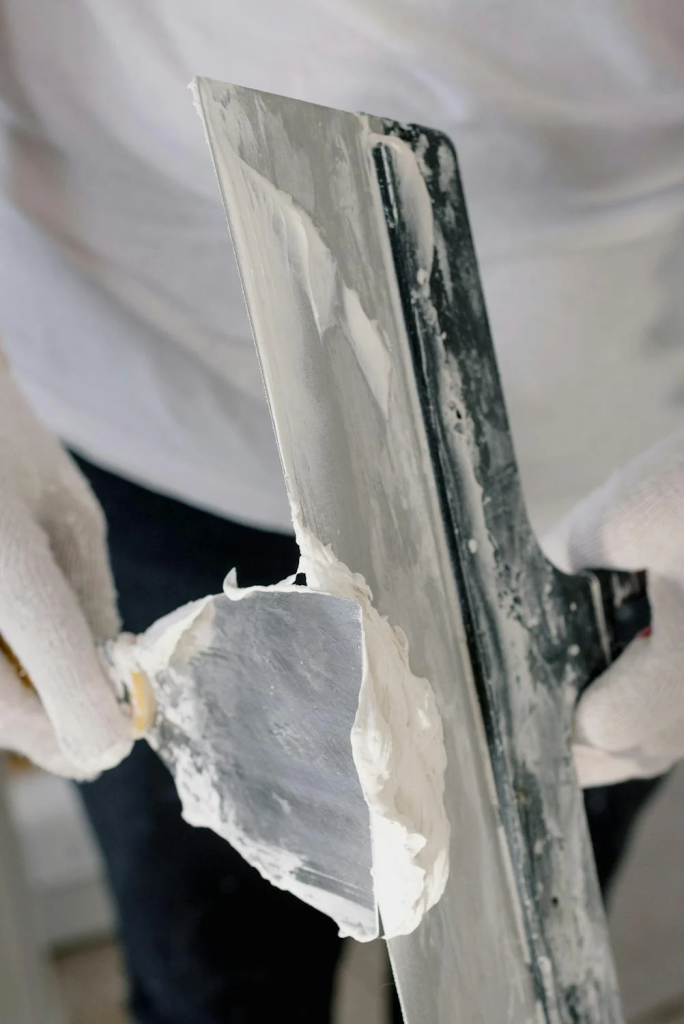Plastering is an essential aspect of both construction and renovation projects. It involves the application of a smooth, durable finish to walls and ceilings, ensuring a polished and aesthetically pleasing result. However, not all plastering jobs are created equal. To achieve a perfect finish, it is crucial to understand the acceptable standards for plastering, as well as the best practices to ensure long-lasting results.

This article will guide you through the key standards for plastering, explore common types of plastering techniques, and provide practical tips for achieving high-quality plastering in your next project. Whether you’re a professional plasterer or a DIY enthusiast, knowing what constitutes an acceptable standard will help you avoid common mistakes and deliver a smooth, flawless finish.
What Is An Acceptable Standard For Plastering?
An acceptable standard for plastering is typically characterized by smooth, even surfaces that are free from defects such as cracks, lumps, or tool marks. Achieving this standard requires attention to detail, quality materials, and proper application techniques. The main goal is to create a surface that is both functional and visually appealing.
The following key factors define the acceptable standards for plastering:
Smoothness and Evenness
- The plaster should be smooth and free from undulations or imperfections. This means that the surface should be level, with no visible high or low spots. Achieving this requires precise troweling and finishing techniques, as well as careful attention to the consistency of the plaster mix.
Proper Adhesion
- One of the most important standards is ensuring that the plaster adheres properly to the substrate. Whether plastering over brick, block, or drywall, the bonding between the surface and the plaster must be strong to avoid peeling or cracking over time. This can be achieved by properly preparing the surface (e.g., cleaning and priming) before applying the plaster.
No Visible Joints
- When plastering large surfaces, especially on walls, it is crucial to avoid visible joints between different plastered areas. Seams should be properly blended and smoothed out to create a seamless finish. Visible lines or seams can create an uneven appearance and are considered an undesirable flaw in plastering.
Consistent Texture
- The texture of the plaster should be consistent throughout the surface. Whether you are applying a smooth finish or a textured one, the final result should have an even distribution of texture across the entire area. Uneven textures can detract from the overall appearance and are often a sign of rushed or unskilled plastering work.
Drying and Curing Time
- The plaster must be given enough time to dry and cure properly before any further treatments, such as painting, are applied. Rushing this process can result in cracks or an uneven finish. Follow the manufacturer’s guidelines regarding drying and curing times to ensure the plaster reaches its full strength and durability.
Clean Edges
- A high-quality plastering job will have crisp, clean edges where the plaster meets other surfaces, such as windows, doors, and corners. Jagged or uneven edges can make the finish appear sloppy, so careful finishing around these areas is essential for an acceptable standard.
By adhering to these standards, you can ensure a plastered surface that not only looks great but also stands the test of time. These key elements contribute to the durability, functionality, and overall appearance of the plaster.
Types Of Plastering Techniques
Plastering isn’t a one-size-fits-all process. Depending on the type of surface you’re working with and the desired finish, there are several plastering techniques to choose from. Each technique has its own set of standards to ensure optimal results. Below are some of the most common types of plastering techniques:
Skimming
Skimming is a technique used to create a smooth, flat surface on previously plastered or rough walls. It involves applying a thin layer of plaster over the existing surface to eliminate imperfections such as bumps, cracks, or old paint. Skimming is often done to achieve a polished finish before painting or wallpapering.
For skimming to meet acceptable standards, the plaster must be applied evenly and allowed to dry thoroughly. The skim coat should be smooth and free from visible seams, air bubbles, or marks left by the trowel.
Bonding
Bonding plaster is used to provide a solid base for finishing coats. It’s typically applied to rough, uneven, or porous surfaces such as brick or block walls. Bonding plaster is designed to adhere well to surfaces that may not be ideal for finishing plasters.
An acceptable bonding coat should be applied evenly and allowed to dry before the finishing coat is applied. It should be free from defects such as uneven texture or incomplete coverage.
Lime Plastering
Lime plastering is a traditional method that uses a mixture of lime, sand, and water. It’s often used in historical building restorations, as it is more breathable than modern gypsum-based plasters. Lime plaster allows moisture to pass through, making it ideal for older structures that may have damp issues.
For lime plastering to meet an acceptable standard, the application process requires careful timing, as lime plaster can be sensitive to temperature and humidity. The finish should be smooth, and the lime plaster should be fully cured before any other treatments are applied.
Venetian Plaster
Venetian plaster is a decorative plaster finish that creates a marble-like surface. It’s commonly used in luxury interiors to achieve a high-end, glossy look. Venetian plaster involves several layers of plaster that are polished to a smooth, shiny finish.
To meet acceptable standards, Venetian plaster must be applied in thin layers, with each layer allowed to dry before the next is added. The surface must be evenly polished, and there should be no visible tool marks or imperfections.
External Render
External rendering is a plastering technique used on the exterior of buildings. It is designed to protect the structure from the elements while providing a smooth, durable finish. External render is often made from a combination of cement, sand, and water.
For external render to meet acceptable standards, the surface should be level, with no cracks or gaps. The render should be applied evenly and with proper adhesion to the substrate. It’s also crucial that the render be weatherproof and durable enough to withstand the elements.
Common Plastering Problems And How To Avoid Them
While achieving a high standard of plastering is important, it’s also crucial to be aware of the common mistakes and issues that can arise during the process. Here are some of the most common problems you might encounter and tips on how to avoid them:
Cracking
- Cracking is a common problem in plastering, often caused by improper drying times, poor mixing of plaster, or excessive pressure during the application. To avoid cracks, ensure that the plaster is mixed according to the manufacturer’s instructions and allow it to dry slowly and evenly.
Bubbles or Holes
- Bubbles and holes can appear in plaster if air is trapped during application or if the plaster is applied too thickly. To avoid this, always ensure that the plaster is applied in thin, even coats and that air is not trapped beneath the surface.
Uneven Texture
- Uneven texture can result from inconsistent application or improper trowel techniques. To prevent this, take care to apply the plaster evenly and avoid overworking the surface. Make sure to use the correct tools and techniques for the specific type of plastering you’re doing.
Poor Adhesion
- Plaster that fails to adhere to the surface can peel or crack over time. This is usually the result of insufficient surface preparation. Before applying plaster, ensure that the substrate is clean, dry, and properly primed to ensure good adhesion.
By being aware of these common issues and taking the necessary precautions, you can avoid problems and achieve an acceptable standard of plastering.
Conclusion
Plastering is an art that requires skill, attention to detail, and a thorough understanding of the acceptable standards involved. Whether you are working on a new build, renovation, or restoration project, following these standards will help ensure that the finish is smooth, durable, and visually pleasing.
By focusing on elements like smoothness, adhesion, texture consistency, and proper curing times, you can achieve professional-quality plastering. Additionally, being familiar with different plastering techniques and common problems will help you improve your skills and avoid potential issues. With the right tools, techniques, and knowledge, you can create plastered surfaces that stand the test of time.
Click and read this guide “i thought about this” for more details.
